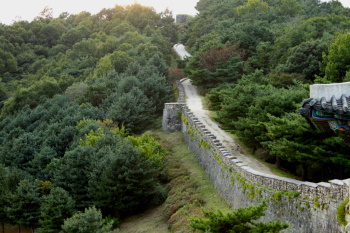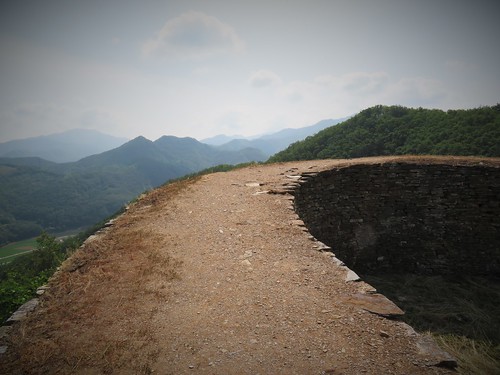Ancient Mountain Fortresses in Central Korea

Ancient Mountain Fortresses in Central Korea is part of the Tentative list of Republic of Korea in order to qualify for inclusion in the World Heritage List.
The mountain fortresses in central Korea have unique defensive systems, which make the best use of their topography and demonstrate distinctive technique in construction throughout the ages. In particular, it allows us to investigate the interaction between the culture that prospered in central Korea and neighboring cultures such as the southernmost site of the Goguryeo Kingdom.
Map of Ancient Mountain Fortresses in Central Korea
Load mapThe coordinates shown for all tentative sites were produced as a community effort. They are not official and may change on inscription.
Community Reviews
Kyle Magnuson
California - United States of America - 11-Jun-11 -

Anyone familiar with Korea and its long history will know there are an incredible amount of fortresses in Korea. Current estimates number 2,400 total fortresses in Korea. (Offcourse varying degrees of intact fortresses remain, some only being earthen fortresses) Nearly every national or provincial park in Korea has at least one sanseong (fortress). There are basically three types of fortresses in Korea: Fortress to protect the Royal Family - Fortress to protect a town/city/village - Mountain Fortress (this being by far the most numerous). The fortresses included in this nomination are unique in the fact that all are located in the border region of Korea's ancient three kingdoms: Silla, Baekje, and Goguryeo. Nearly all 7 fortresses in this serial nomination were held, rebuilt, or restored by two or more dynasties.
I visited 3 of the mountain fortresses included in this nomination.
1) Samnyeon sanseong (Boeun), 2011
2) Sangdang sanseon (Cheongju), 2011
3) Ondal sanseong (Danyang), 2016
Samnyeon sanseong is unique in that it is very much a ruined fortress and was not rebuilt by the Joseon dynasty (This fortress is a Silla fortress, and was previously nominated individually on Korea's previous T-list) Perhaps unfortunately there is a completely rebuilt section of Samnyeon sanseong, and it stands out; also the fortress is kind of out of the way. (no tourist facilities) Sangdang sanseong is a much more common mountain fortress in Korea, heavily restored early in the Joseon Dynasty this fortress is mostly intact, with some newly renovated sections. Beautiful location and a pleasant 1 - 2 hr hike.
Ondal Sanseong is one of the most empty historical sites I have visited in Korea. In the 2.5 hr hike (round trip) to the fortress I saw 0 fellow hikers, but instead I met archaeologists busy at work in the fortress itself. They were actually digging up projectiles kept handy at the fortress wall to lob at unlucky enemy soldiers! If you visit the site you will understand how useful this may have been for the defenders. Ondal sanseong is at a strategic location with views of all possible directions of travel, in fact only three places. 2 valleys and one river. At this location, you can imagine the fortress could act as a highly useful border fortress.
The vast amount of fortresses in Korea have played a central role in defending the nation. Ancient Korea was heavily fortified and because of the near impossibility of enemy forces capturing countless formidable town and mountain fortresses, Korea remained largely independent for most of its history. One fortress would be captured, word would spread to a nearby fortress to prepare, and another siege would commence. On two occasions Korea did not properly use its fortresses, and both led to incredible disasters for the country. The two calamities for the Korean people were the Mongol invasion during the 13th century and the Japanese Samurai invasion during the 16th century. So there is tremendous historic importance concerning Korea's ancient fortresses, however do they merit the label of OUV? I honestly don't know. Hwaseong is already inscribed, but that is a recent fortress only built in 1799. Samnyeon Sanseong is from the 7th century, and marks Silla's slow expansion and eventual success (together with Tang dynasty China) in defeating Baekje and Goguryeo. I am curious to see the outcome of this nomination. Hwaseong fortress and Namhansanseong are both representative Korean fortresses, though undoubatbly this serial nomination adds unique elements from a far earlier period in Korean history. Yet, how many Korean fortresses deserve world hertitage status?
Read more from Kyle Magnuson here.
Site Info
- Full Name
- Ancient Mountain Fortresses in Central Korea
- Country
- Republic of Korea
- Added
- 2010
- Type
- Cultural
- Categories
- Structure - Military and Fortifications
- Link
- By ID
Site History
2010 Revision
Includes former TWHS Samnyon (Fortress) Wall (1994)
2010 Added to Tentative List
Site Links
Visitors
13 Community Members have visited.
